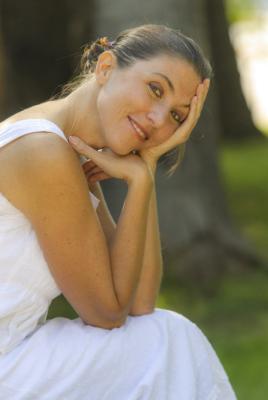
By David Tecklin
Editors Note: The following is from Issue 15.
The movement to protect nature on private lands in Chile is now widespread and growing. Hundreds of private conservation projects of all kinds are on the march. This includes not just the monumental parks agreement between Tompkins Conservation and the Chilean government, but emblematic areas like the Valdivian Coastal Reserve, Juncal Andino Park, Karukinka Park, and Huilo Huilo. The maturation of that land conservation movement builds in large part on the work of conservationist and environmental educator, Elisa Corcuera, who died on July 14 at age forty-four.
Today, conservation enjoys broad if vague public support in Chile, and those of us working in the field no longer feel quite so far out on the social and political margins as we did only 10 or 20 years ago. Elisa was there at the very beginning. While in college she helped to create the Ahuenco reserve to protect lands adjacent to Chiloe National Park, still the most prominent example of the distinctively Chilean approach to collective protection of lands known as the “conservation community.” Elisa completed a degree in journalism at Chile´s Catholic University followed by a master’s in environmental planning at Arizona State University in the U.S. Upon returning to Chile in 1999 she began work as a freelance conservation planner.
I met Elisa that year. She was working then on a conservation zoning proposal for the Cochamo Valley. Both of us conservationists and enthusiasts for wild nature, our lives would crisscross periodically for the ensuing two decades. At the time, Cochamo was just another little-known mountain valley in southern Chile, not yet a global magnet for climbers and hikers. Elisa’s proposal provided guidance to a succession of citizens´ groups that emerged to protect the valley and manage its swelling flow of visitors. While Cochamo still lacks formal protection it now has an aura of “parkness” that has already helped its defenders to forestall those threats typical of Chilean river valleys: hydroelectric projects, roads and forest clearing for development.
Private land conservation began to take off in the mid-1990s with Chile’s return to democracy. The movement though had no clear identity. There were the questions of whether this was an issue of the political Right or Left? Would it be philanthropic or profit driven? Was it relevant to rural communities and small landowners or only to the elites? Should it be guided by technical NGOs or by home grown innovation? Elisa, however, was generally unconcerned by doubts and divisions. She had a “good naiveté” as her mother puts it, a drive to move forward without getting bogged down by the challenges ahead. Her charisma and capacity to look ahead to what could be done brought innumerable people together, and her charm and smile were legendary.

.jpg)
Over the course of 2000 a group of us worked with Elisa to organize the first Chilean Congress for Private Land Conservation in 2001. Shortly after, facing the loss of the last large blocks of rainforest in the coastal range of Chile’s Los Rios region, WWF and The Nature Conservancy teamed up to acquire core conservation areas in the area. As a consultant, Elisa developed the first map and ranking of parcels for the acquisition that would become the Valdivian Coastal Reserve in 2003. She lived on site for several months alongside her boyfriend, exploring and mapping the new reserve, and laying out many of the reserve’s trails and public use areas.
This streak of exploration was to continue for the next few years, as Elisa hiked and rediscovered trails all over. It was a burst of exploration not slowed even by a diagnosis of breast cancer in 2007. I mean that literally. On a weeklong hike in the Ventisquero Valley just a week after one of Elisa’s chemotherapy treatments I remember struggling to keep pace with her. During her professional life she visited more private lands conservation projects than anyone in Chile. All it took was a slight invitation and she was reaching for her backpack to go.
In 2009, Elisa took a leadership role in the effort to organize conservation landowners with the support of GEF, WWF, The Nature Conservancy and others that led to the creation of Así Conserva Chile, a diverse and active organization that spanned indigenous community reserves and large landholders. Elisa led the organization until 2013 and remained active nearly to the end, contributing along the way to an important legislative achievement with the passage in 2015 of the Derecho Real de Conservación, a new tool for legal protection of private lands.
Her illness would bring her back to focus on her family´s own conservation project, the Katalapi Park near Puerto Montt. Elisa acted as ambassador and project developer, linking the park to the thousands of people who have passed through since on one of its field courses or school visits. With her mother, Ana Vliegenthart, often described as the mother of environmental education in Chile, and father Luis Corcuera, an accomplished plant physiologist, they grew a simple family retreat into a successful and self-financing educational and research center.
Like the Cochamo Valley, even though it is without legal recognition or any substantial governmental support, Katalapi has achieved a kind of authentic “parkness.” Like so many places touched by Elisa, you can feel there a deep affection for the land and for the efforts of individuals seeking to conserve it, and things are moving forward regardless of the challenges ahead.
The author, David Tecklin, is a research associate at Austral University of Chile and a senior advisor for the Pew Charitable Trusts.





.gif)



